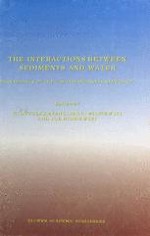1997 | OriginalPaper | Buchkapitel
Pollutant Exchange at the Water/Sediment Interface in the Venice Canals
verfasst von : E. Argese, E. Ramieri, C. Bettiol, B. Pavoni, E. Chiozzotto, A. Sfriso
Erschienen in: The Interactions Between Sediments and Water
Verlag: Springer Netherlands
Enthalten in: Professional Book Archive
Aktivieren Sie unsere intelligente Suche, um passende Fachinhalte oder Patente zu finden.
Wählen Sie Textabschnitte aus um mit Künstlicher Intelligenz passenden Patente zu finden. powered by
Markieren Sie Textabschnitte, um KI-gestützt weitere passende Inhalte zu finden. powered by
The space-time distribution of some pollutants (Cu, Pb, Zn, Cd, Fe, Mn, V, Ni, Cr) in the sludge of the canals of Venice was studied. The contamination levels were comparable to, or higher, than those measured in the most polluted sediments of the Lagoon of Venice. Sediments were collected by two different sampling techniques: 1) collection of sediment cores (upper 5 cm) by a syringe-type corer; 2) collection by traps, placed on the bottom of the canal. Traps permitted the sampling of sediments essentially resuspended by overlying water turbulence. This sediment fraction is subjected to variations of its physicochemical parameters (principally change of redox conditions) and therefore to pollutant exchange at the water/sediment interface.The metals principally exchanged during sediment resuspension were Cd, Pb, Zn and Cu. These metals have principally an anthropogenic origin and are bound to the most labile geochemical phases of the sediment (such as sulphides), which can be oxidised during sediment resuspension, releasing metals into the water. Fe, Cr and Ni were only partially exchanged, while Mn and V were generally not exchanged; a significant fraction of these metals is of natural origin and is bound to the most refractory phases of the sediment.
